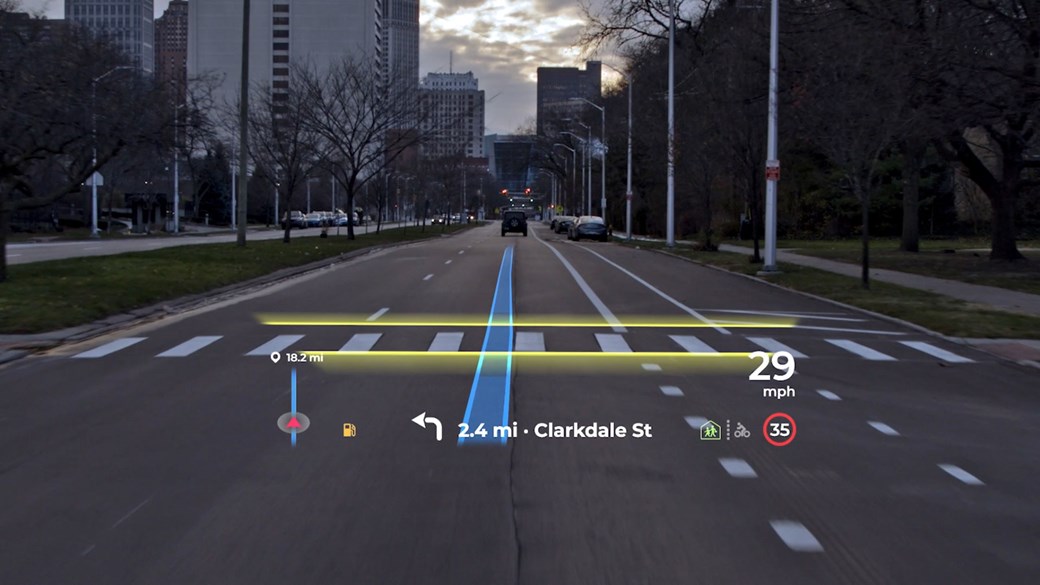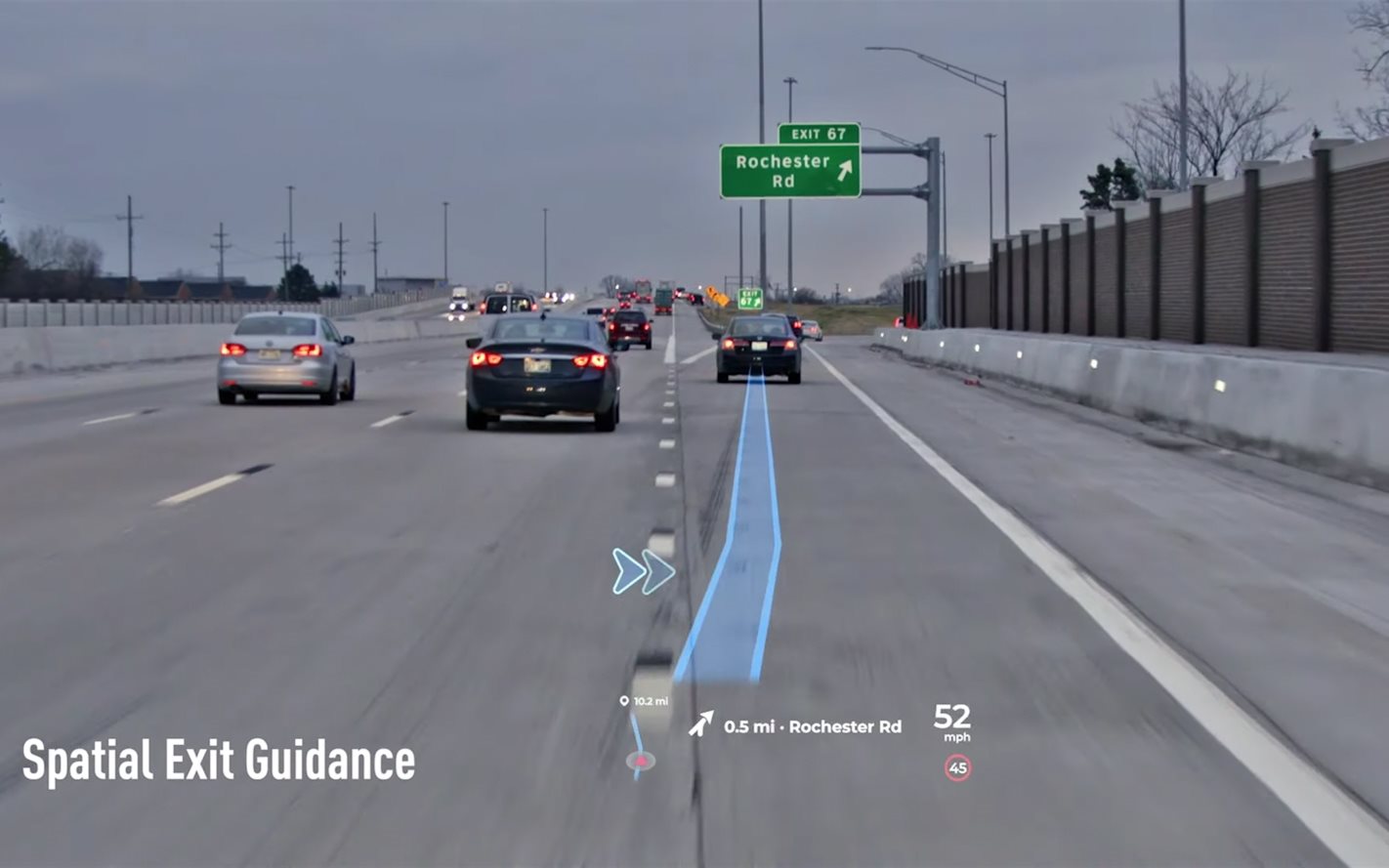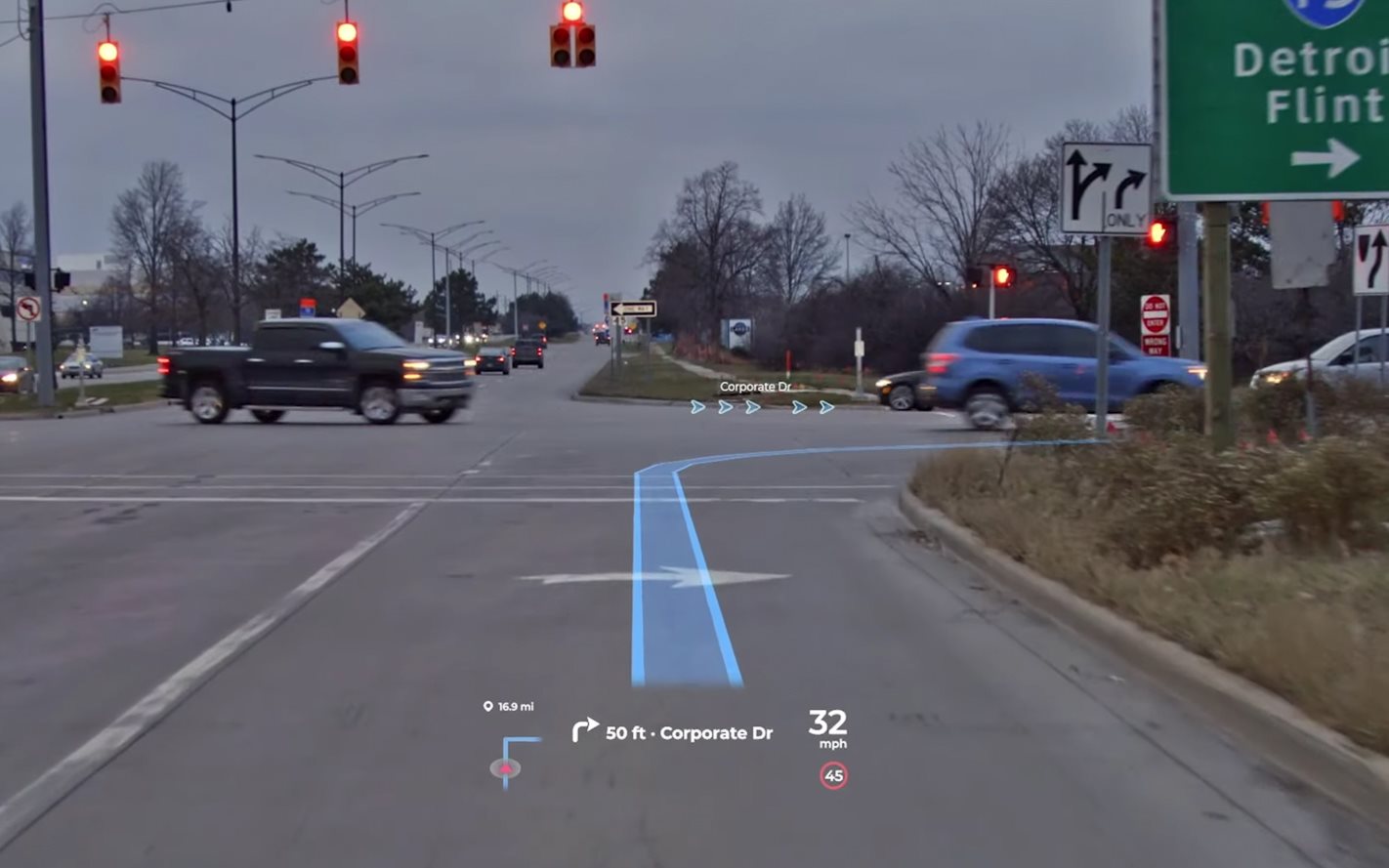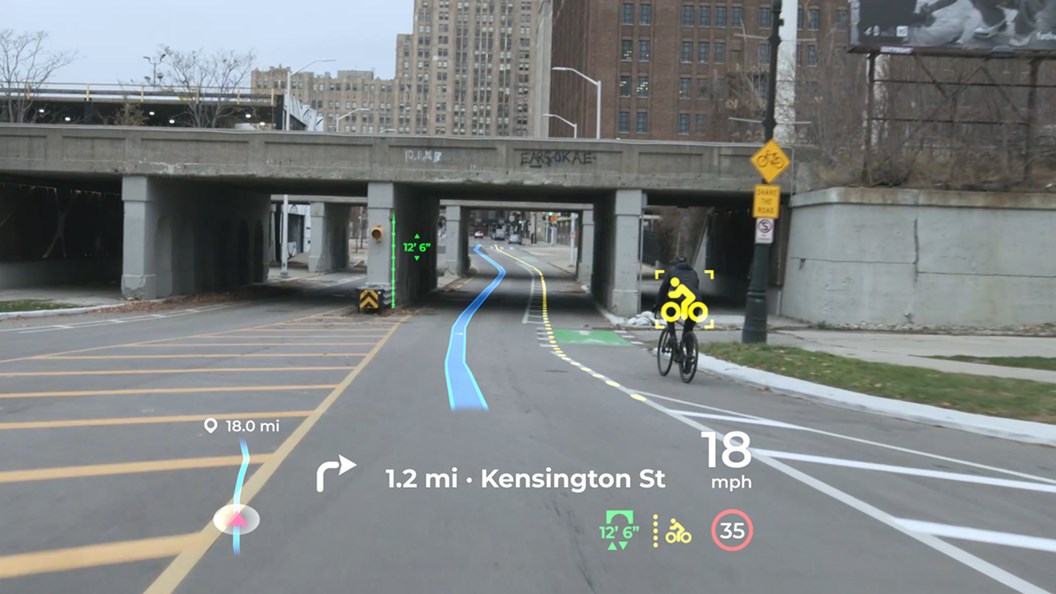Electronics company Panasonic has used the 2021 Consumer Electronics Show to display a futuristic augmented reality head-up display (HUD).
Designed to build upon systems found in cars today, the augmented reality HUD uses artificial intelligence to detect and highlight potential hazards involving pedestrians, cyclists, bridges or other vehicles.
The Panasonic Automotive arm of the technology firm says that with the advent of autonomous driving comes a reduced driver focus on information and surroundings, prompting its engineers to create a new HUD that can project graphics on a car’s windscreen relative to its surroundings.

The artificial intelligence-driven system uses 4K resolution displays to project information that the AI deems important into the driver’s line of sight. The system goes far beyond today’s HUDs that show little more than vehicle speed and satnav instructions.
The Panasonic AR HUD can do all the basics such as speed and satnav instructions. It can also project 3D images into the distance to highlight obstacles or enhance those navigation instructions, all without requiring driver involvement.

The bottom half of the display shows regular HUD information like speed, speed limits and a rev counter. The top half of the display is designed to show information in unison with the car’s surroundings.
Navigation directions can be projected metres ahead onto the road. It can highlight potential driving hazards like narrow bridges and errant cars cutting you up.
Panasonic’s augmented reality HUD can track the driver’s eyes to ensure the display is aligned with head and eye position. It features vibration control with image stabilisation derived from the brand’s camera division, and has real-time situational awareness that can update images in three-tenths of a second.

‘The HUD market is one of the fastest-growing categories in mobility, but traditional HUDs only cover a small section of the road,’ said Scott Kirchner, president of Panasonic Automotive, of the new system.
‘Panasonic’s AR HUD solutions cover more of the roadway, with traditional cluster content like speed and fuel in the near field as well as 3D overlays in the far field, showing navigation and other critical driver data mapping spatially to the road ahead.

‘And in a future with more self-driving vehicles, our AR HUD could provide an important added level of comfort and assurance for [autonomous vehicle] passengers as well.’
Like many of the technologies presented at CES, no official date has been given by Panasonic for mass production of vehicles using the tech. Envisics, a partner of the augmented reality HUD project, told ETAuto that we’ll start to see the tech integrated into vehicles from 2023.
CUT COTS OF THE FLEET WITH OUR AUDIT PROGRAM
The audit is a key tool to know the overall status and provide the analysis, the assessment, the advice, the suggestions and the actions to take in order to cut costs and increase the efficiency and efficacy of the fleet. We propose the following fleet management audit.





